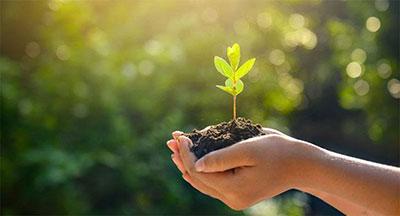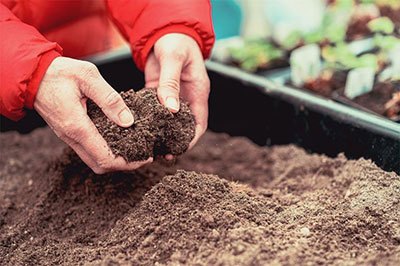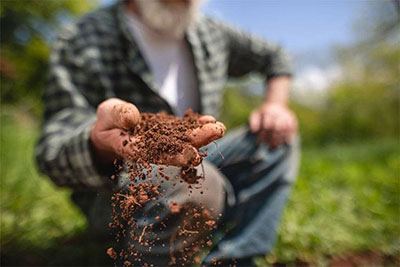If you’re new to the world of gardening, there are certain terms that you will surely come across, such as potting mix vs. potting soil. While it may be confusing at first, we’re here to guide you to help you understand the basics of gardening.
Some gardeners usually identify and segregate their materials to help categorize the difference between potting mix vs. potting soil.
However, there is not much real difference between the two. Both are characterized as potting mediums that are used to help grow and develop the plants that are produced in containers.
Table of Contents
Let’s start with potting mediums

Successful and healthy plant production requires the use of potting mediums. This is utilized in order to create the right balance to help certain plants grow and thrive.
Potting mediums involve different types of materials that are combined to nourish the plants, provide proper air circulation and develop an efficient drainage system in order for the plants to cultivate properly.
There are various types of potting mixes, such as sand, charcoal, fertilizer, perlite, vermiculite, peat moss, and loam, among many others. On the other hand, some potting materials do not contain soil in them.
Potting mediums, potting mixes, and potting soils are all created and formulated to be used in containers. These are not meant for beds. A bed, on the other hand, uses garden soil mix or blended topsoil.
As a newbie, you may get slightly confused at first. When I started, I did not clearly understand the difference between the two.
How to determine the difference between potting soil vs. Potting mix
1. Potting soil
A potting soil is a commercial plant medium that contains three key ingredients such as pine bark, peat moss, and perlite or vermiculite.
Be wary that potting soil doesn’t actually contain soil in it. Instead, it is made up of natural ingredients that are derived from plants and minerals.
Soil may be added later on, but only after it has undergone a sterilization process using heat treatment. Potting soils normally have high water absorbance.
Some potting soils are made of composite materials such as compost, manures, and peat moss. To fill out the potting mix, inorganic materials such as perlite and vermiculite are added.
How to choose the right type of potting soil?
Choosing the right potting soil can assure you of producing a healthy plant. The soil you choose should have a light and soft texture. Make sure your potting soil has all three key ingredients.
You may add a fertilizer through slow-release formulation and adjust accordingly based on your requirement. If your potting soil requires moisture-retaining treatment, you may have to change your water patterns alternatively.
2. Potting mix

Similar to potting soil, a potting mix doesn’t also contain ant soil in it. Instead, it is formulated with a small amount of microorganisms to provide the seeds with a clean and sterile environment. This helps increase the growth of the plants, especially since all resources are readily available.
The microorganisms also prevent the plants from developing diseases. Generally, potting mixes are used to grow seedlings and usually contain peat or compost.
How to properly use potting soil and potting mix
Technically, both mediums work well for growing plants in a container. The downside, however, is the quality of the soil or compost that often hinders progress and growth.
So, how do you avoid this? Here are some simple tips.
– Use high-quality soil. Before adding it to the potting mix, make sure that you are using high-quality soil. Otherwise, it may not serve its purpose as a growing medium.
– Check the nutrients and pH balance. Your potting mix is significantly affected by the quality of your compost and the peat that helps absorb the water. If your peat contains low-quality ingredients, it may end up retaining too much water. At the same time, poor compost may contain too many microorganisms, which is also not good for your plant’s growth.
– Use the potting mix and soil correctly. Remember, a potting mix is highly recommended for plants that need nutrient enhancement, including germinating plants and flowers. Potting soils, on the other hand, are more suitable to help you properly grow plants that do not require heavy maintenance, such as tropical house plants.
– Read the label. Make sure you use the appropriate potting medium for your plant project. Don’t forget to check and read the label on the package first. Check the ingredients on the bag or ask about the contents. If your bag has soil in it, then it is not meant for container plants and instead is used for raising beds or filling bald spots in your lawn.
– Use the right amount of mix. Before you plant your seed, test your mix first. Keep your proportions on the spot. Make sure your soil or mix can hold up your plant. If your plant has a deeper set of roots, it is advisable to use potting soil. However, for smaller plants that do not yet have a root system, you may opt to use a potting mix instead.

Final tips and reminders
Don’t forget that when you’re working with container plants, the seedlings flourish best when you start planting in a clean and sterile environment.
Make sure your container has tons of drainage available. You wouldn’t want your potting soil or mix to drown out your plant.
Use potting soil that contains a mixture of peat, pine bark, and perlite or vermiculite. Then you may try adding a potting mix over the soil. Potting soils and mixes come in various types. Each has specific mixtures that are more appropriate for certain kinds of plants.
We hope you found this article helpful and informative. Let us know how it turns out. We’d love to hear your comments and feedback.
If you have any suggestions, feel free to leave us a message below, and please don’t forget to share this write-up with your friends.
